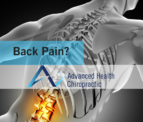Many patients ask, “…do people shrink when they get older?” Even more curiously, does our height vary throughout the day and, what causes it to change? The answer to the first question is “yes,” but how does this occur?
During the course of any given day, the intervertebral disks of the spine, those shock-absorbing sponge-like structures that lie between the vertebrae, absorb or lose water ,which leads to an increase or a decrease in our vertical height, respectively.
This property is called “viscoelastic creep,” and determines our overall stature, which can result in a reduction of 19.3mm (1.1% of our stature) in height between morning and night / end of the day.
Very little of our total daily loss in height is due to other non-disk soft tissue structures.
Interesting, 19% of this loss occurs during the first 5 minutes of sitting.
We can increase height by laying on the stomach and bending backwards. This can increase our total spine height 5.2mm, of which 2.1mm comes from the low back area alone.
The angle and optimum length of time held in extension (sagging push-up position) to increase spinal height is 20 minutes at 20 degrees.
One research group using a group of 20-30 year olds, started by laying for 10 minutes followed by sitting in a fixed position for 5 minutes with loading using 4.5kg sand bags placed on the shoulders and were measured for loss in height.
They were then sat back down without loading with measurements taken at one minute intervals for 5 minutes followed by loaded sitting for 5 minutes. Again, spinal height was measured and they were then randomly assigned to a sagging push-up group or, a supine hook-laying position (laying on the back, hips flexed 90 degrees and knees flexed 65 degrees for 10 minutes after which spinal height was re-measured.
This was repeated using the opposite exercise position on each subject. The results revealed almost all of the loss resulting from sitting and loaded sitting was regained in both of the two exercise positions, slightly favoring the laying on the back/hip-knee flexed position.
No significant difference in disk height loss/spine height was appreciated comparing the loaded vs. non-loaded sitting positions or between men vs. women subjects. The body mass index did not seem to alter the results either.
SO HOW DOES THIS RELATE TO EVERYDAY LIVING AND LOW BACK PAIN?
It’s no secret that many of us spend a significant portion of time sitting.
It is also a well known fact that the pressure measured in the lower back disks when comparing sit, stand, and lying positions reveal sitting places 2x the pressure in the disk as does laying, with standing somewhere in the middle.
Also, comparing 4-leg animals to 2-leg animals, disk degeneration starts significantly earlier in the 2-leg animal population.
While we can’t expect anyone to walk on all fours, these findings suggest it would be prudent to “take the load off” periodically throughout the day.
If we all performed 10 minutes of either extension or flexion exercises as described here, we might be able to slow down the process of disk degeneration.
If we’re currently struggling with spinal problems, this suggestion may be all the more justified. Further research is required before these conclusions can be considered more than theory.
Our advice is, try it, and see how you feel!
At this clinic, we take pride in providing accurate, up-to-date information about research. If you, a family member or a friend require care, we sincerely appreciate the trust and confidence shown by choosing our services.
Categories: Chiropractic



